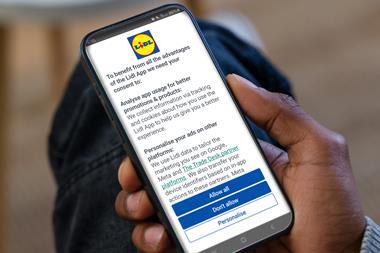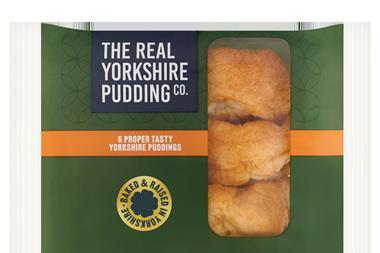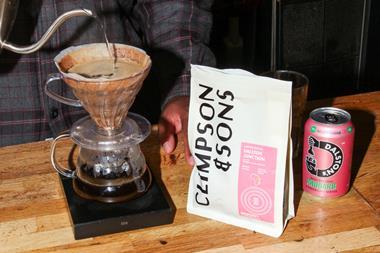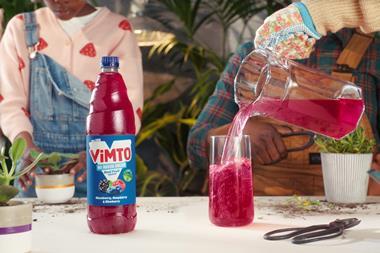What¹s more important to get right, product or packaging?
Jeremy Martin
Marketing director
For Goodness Shakes
Packaging is the gateway to your product. It sets expectations. It makes a promise. It even discriminates, inviting the customers you want and excluding those you don¹t. Brilliant packaging can replace advertising and promotion. Yes, you can sell a duff product in great packaging. But only once. Under-deliver and make false claims and you¹ll be knocked down. Hard and fast.
Product and packaging are Œone¹. It¹s the whole Œpackage¹ that counts, not the individual parts. Think Gü Puds. The promise starts with the pack and ends with the last crumb. Or Innocent. The transparency. The delivery of nothing but nothing but fruit.
When we designed the For Goodness Shakes! bottle, it had to reflect the strength and energy giving promise of the product, so we created the Œathlete dumbbell¹ bottle. It¹s easy to grip and fits into a car drinks holder a manly and functional design, just like the milkshake itself.
How can you check you¹ve got a great piece of packaging? Flash your pack for three seconds and ask your target to tell you what the product is. Blokes told us For Goodness Shakes! was ³a sporty, healthy milkshake for men². It set the product apart from anything else in the category. And in the impulse market, there¹s no time to be misunderstood.
How do you test whether you¹ve got a great product? Start with the packaging and ask customers whether it Œdoes exactly what it says on the tin¹.
Eddie Stableford
Managing director
Bryt
With the grocery retail sector highly developed, every category comprises of a plethora of products co-existing with each other and competing for the attention of the consumer.
With the average purchase decision taking just 3 seconds, packaging has to communicate extremely effectively and have the inherent ability to create an Œinstant dialogue¹ with a potential purchaser.
If it¹s a regular purchase, the packaging shape, form and colour act as visual shorthand, enabling the consumer to quickly identify their favoured product on shelf.
For a new product the task is more complex. Just as we have to work harder when we meet someone for the first time, packaging has to use its own Œbody language¹ to communicate key product attributes and to define expectations.
With only 20% of the purchasing decision taking place consciously, the brand identity and other components of the design play a crucial role, connecting at a sub-conscious level with the consumer.
It is vital that packaging accurately reflects the quality of the offering working in harmony with the product to be most effective an imbalance will not achieve success. Poor packaging on a super product is going to be just as ineffective as great packaging on a poor product in achieving that all-important initial trial.
But with consumer needs varying from day to day, their repertoire of products is larger than ever before, so smart manufacturers are starting to produce occasion-focused products, defined by usage rather than by broad audience demographics.
Initial indications would suggest that this approach is getting the vote of buyers and consumers alike.
Jeremy Martin
Marketing director
For Goodness Shakes
Packaging is the gateway to your product. It sets expectations. It makes a promise. It even discriminates, inviting the customers you want and excluding those you don¹t. Brilliant packaging can replace advertising and promotion. Yes, you can sell a duff product in great packaging. But only once. Under-deliver and make false claims and you¹ll be knocked down. Hard and fast.
Product and packaging are Œone¹. It¹s the whole Œpackage¹ that counts, not the individual parts. Think Gü Puds. The promise starts with the pack and ends with the last crumb. Or Innocent. The transparency. The delivery of nothing but nothing but fruit.
When we designed the For Goodness Shakes! bottle, it had to reflect the strength and energy giving promise of the product, so we created the Œathlete dumbbell¹ bottle. It¹s easy to grip and fits into a car drinks holder a manly and functional design, just like the milkshake itself.
How can you check you¹ve got a great piece of packaging? Flash your pack for three seconds and ask your target to tell you what the product is. Blokes told us For Goodness Shakes! was ³a sporty, healthy milkshake for men². It set the product apart from anything else in the category. And in the impulse market, there¹s no time to be misunderstood.
How do you test whether you¹ve got a great product? Start with the packaging and ask customers whether it Œdoes exactly what it says on the tin¹.
Eddie Stableford
Managing director
Bryt
With the grocery retail sector highly developed, every category comprises of a plethora of products co-existing with each other and competing for the attention of the consumer.
With the average purchase decision taking just 3 seconds, packaging has to communicate extremely effectively and have the inherent ability to create an Œinstant dialogue¹ with a potential purchaser.
If it¹s a regular purchase, the packaging shape, form and colour act as visual shorthand, enabling the consumer to quickly identify their favoured product on shelf.
For a new product the task is more complex. Just as we have to work harder when we meet someone for the first time, packaging has to use its own Œbody language¹ to communicate key product attributes and to define expectations.
With only 20% of the purchasing decision taking place consciously, the brand identity and other components of the design play a crucial role, connecting at a sub-conscious level with the consumer.
It is vital that packaging accurately reflects the quality of the offering working in harmony with the product to be most effective an imbalance will not achieve success. Poor packaging on a super product is going to be just as ineffective as great packaging on a poor product in achieving that all-important initial trial.
But with consumer needs varying from day to day, their repertoire of products is larger than ever before, so smart manufacturers are starting to produce occasion-focused products, defined by usage rather than by broad audience demographics.
Initial indications would suggest that this approach is getting the vote of buyers and consumers alike.















No comments yet